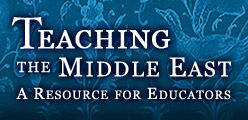Whose Antiquity is Near Eastern Antiquity?
European scholars could always read, write, and even speak ancient Greek and Latin. Explorers who came to the Middle East in the eighteenth and nineteenth centuries could see themselves as the heirs of Greek and Roman culture and of Greek and Roman imperial missions. Greek and Roman writings and the Old Testament scriptures guided their investigations of more ancient ruins.
These guides were inadequate for the languages that were both preserved and concealed by Egyptian hieroglyphics, Mesopotamian cuneiform signs, the Palmyrene alphabet, and other writing systems visible among the ancient ruins. No indigenous learning helped, either, in the way that the knowledge of ancient Sanskrit texts instructed Europeans in India. The ancient scripts and languages were as utterly dead to the people who had lived for centuries in Mesopotamia, Egypt, Anatolia, and Syria as they were to the Europeans who had just arrived.
The European decipherers of these scripts thus revealed ancient cultures that no one claimed yet. Proceeding rationally from known to unknown, they used fragmentary Greco-Roman and biblical accounts to organize their understanding. As European cultures were heirs to the ancient interplay of Greek and Roman civilizations, now Greece and Rome were heirs to more ancient interplays among Egyptian, Mesopotamian, Syrian, and Anatolian civilizations. The texts recorded the infancy of civilization itself, the first steps in a human career that led from the Nile and the Euphrates to Greece and Rome and eventually to modern Europe and America. Thus Western cultures claimed the entire ancient Near East as their own patrimony.
Ancient Near Eastern societies, however, rose and fell in territories that became modern Middle Eastern states. As modern states emerged from Western shadows, each treated the antiquities of its territories as its own national cultural patrimony. As ancient Hebrews were forebears of modern Israelis, so ancient Egyptians, Sumerians, Hittites, or Persians were forebears of modern Egyptians, Iraqis, Turks, or Iranians. European perspectives directed these nationalist assertions of historical identity. European scholars helped create archaeological services and museums in Middle Eastern nations. Many Middle Eastern specialists in antiquity studied in Western universities. Thus Western interpretations of the ancient Near East were repatriated in Middle Eastern nations. And thus Western and Middle Eastern readers may concur on the facts of ancient history, but contest their cultural significance.
Supporting Links:
“Georg Friedrich Grotefend.” Wikipedia. Link to resource![]() (accessed June 24, 2010).
(accessed June 24, 2010).
Gerstenblith, Patty. Art, Cultural Heritage, and the Law: Cases and Materials. Carolina Academic Press, 2008. Link to resource![]() (accessed June 24, 2010).
(accessed June 24, 2010).
“Hugh Eakin Sums up Cuno’s Recent Writings.” Illicit Cultural Property: A Weblog about Art, Antiquities and the Law. Link to resource![]() (accessed June 24, 2010).
(accessed June 24, 2010).
“Illegal Antiquities Trade.” Echo: News and Articles—Making Archaeology Work to Protect Egypt’s Heritage. Link to resource![]() (accessed June 24, 2010).
(accessed June 24, 2010).
Larsen, Mogens T. “Orientalism and Near Eastern Archaeology.” Domination and Resistance. 1989. p. 228-239. Link to resource![]() (accessed June 24, 2010).
(accessed June 24, 2010).
ROROTOKO. Rothfield, Lawrence. The Rape of Mesopotamia: Behind the Looting of the Iraq Museum. Review. Link to resource![]() (accessed August 13, 2010).
(accessed August 13, 2010).

 Matthew W. Stolper
Matthew W. Stolper
Professor of Assyriology and the John A. Wilson Professor of Oriental Studies
Guiding Questions
1. In what ways might Western and Middle Eastern readers disagree on the cultural significance of the ancient Near East?
2. Why were ancient writing systems difficult for Europeans to decipher?


 Print Page
Print Page
